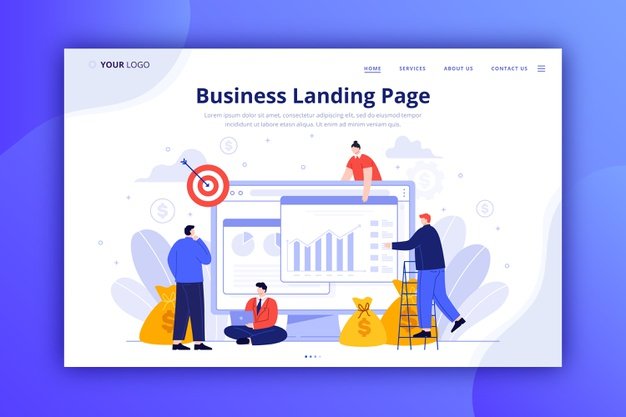All of your inbound marketing activities are focused on the basis of building a permission-based email list.
Capturing your prospects’ contact details, especially their email address, is thus a critical step in your marketing funnel.
So what’s the right way to go about doing it? Although there are other choices, creating a landing page is one of the most common and effective.
What is the concept of a landing page design?
A landing page, also known as a squeeze page or a lead capture page, is a standalone website to which you send targeted traffic. To put it another way, you want people to “land” on this website.
Landing pages are created with one goal in mind to collect your prospect’s contact information and gain permission to add them to your marketing list so you can contact them via email, phone, or text message.
The success of your landing page, unlike many other forms of webpages, can be easily measured by tracking the conversion rate, which is the percentage of unique visitors who complete the opt-in form.
Don’t lose sight of your primary goal, obtaining your prospect’s contact information!
This is extremely important. The sole purpose of your landing page should be to collect your prospect’s contact details. Other, wider goals may be part of your overall marketing plan, but now is not the time to concentrate on them; your landing page is designed to capture your prospect’s contact information.
Get rid of something that is getting in the way of achieving your target.
When creating your landing page, make sure to provide only the information that is absolutely required to convince your target to send you their contact information.
Anything else is superfluous and would only serve to confuse your audience and lower your conversion rate. As a result, landing pages typically have fewer navigation options.
Many advertisers also drop navigation links entirely, leaving the prospect with only one choice: whether or not to opt-in.
Make a story that will catch people’s attention.
Since the headline of your landing page will be the first thing that your prospect sees, it must capture their attention and entice them to stay on the page.
Have a picture of your lead magnet on hand so they can see what they’re getting.
An attention-getting picture that tells your prospect what they’ll get should be used in conjunction with your attention-getting headline. This could be a photo of your special article, case study, or something similar.
When prospects can see a three-dimensional picture of your lead magnet, it makes it more tangible and makes them want to get it.
Offer them a list of the benefits they will get in bullet form.
People don’t just give out their email addresses to someone or some company. You must provide them with justifications. Giving them a list of three to five advantages that are easy to read in bullet form is a good way to do this.
Important: Just mention the advantages of your lead magnet, not the advantages of your service. Concentrate on selling your lead magnet now, and once they’ve entered your list, you’ll have several opportunities to sell them your service later.
The lead capture form should be visible and easy to fill out.
Since this is where your prospects will send you their email address and other contact information, a lead capture form should be easy to see and complete.
You can just ask for the contact information that you actually need in order for it to be as seamless and reliable as possible.
The more detail you need, the less people can fill out the form. You want to strike a balance between getting the most out of your conversions but also asking some pre-qualifying questions to improve the consistency of your leads.
A/B split testing: Compare the conversion rates of various landing pages.
Testing helps you to improve your conversion rate and generate more leads with the same amount of money spent on advertisements, lowering the cost per lead. Ideally, you’ll create two different versions of your landing page – for example, two different headlines – and then send the same amount of traffic to both to see which one generates more leads.
This type of testing can be performed on an ongoing basis, with templates tweaked to ensure the landing page is as successful as possible.
Connect to your customer relationship management system (CRM), database, or email marketing software.
It’s critical to connect your landing page to your CRM, database, or email marketing platform. This eliminates the need to manually enter data, saving you a significant amount of time.
It also ensures that your leads will be able to easily join the marketing funnel, and you will be able to automate the entire follow-up process if desired.
3 Ways to Build a Landing Page
There are three basic methods for creating a landing page:
- Make use of a WordPress theme or plug-in that is specifically designed for this purpose.
- Hire a developer to create a custom landing page for you.
- Using a template will help you save time and money.
Create your first landing page now, and you’ll be well on your way to generating a steady stream of warm leads for your business. Then all you’ll need is a focused traffic source, which I’ll discuss in more detail in a separate post.







